#purified penicillin
Text
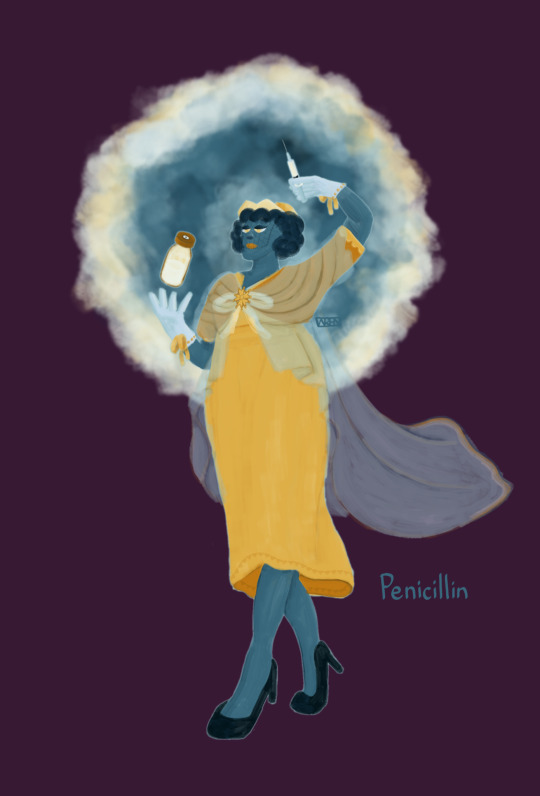
Funguary Week 1, Celestial Penicillin
I learned so much about penicillin this week!

(close up of my favorite details)
Penicillin was discovered by Alexander Fleming in 1928 but it was not used to successfully treat infections until 1930. It took ten more years to isolate the purified compound version that would be used to treat meningitis in 1942, earning a Nobel Prize for Fleming, Chain and Florey (the team who isolated penicillin F).
Obviously, I took my main style inspiration from this time period!
Fleming was also awarded the Grand Cross of the Ordre national de la Légion d'honneur, which serves as the central pin in my design!
I color picked my palette from a microscopic photograph of penicillin mold and I gotta say it is pretty spectacular. This is coming from the person who made a capsule wardrobe a few years ago that consisted of navy blue, mustard yellow and white/tan neutrals though so I may be biased.
Thank you as always to @adorkastock for pose references, this one really made the piece come together in my head!
I'm unreasonably proud of that little bottle of penicillin G (thats the injectable kind), I was not sure if white liquid in a clear vial was gonna work with the colors I had available but it looks so so good!!!
I'm a huge sucker for a gauzy layer and I'm very glad I added that element (and the ribbons on the gloves) because it definitely moves it more into the "celestial" realm.
My inspiration notes for this theme were along the lines of "flowing, draped fabrics, ribbons and small metal accents" along with "haughty" for the mood side of things. Altogether, I'm extremely happy with this one! And excited for the next -- I already have an idea percolating :)

(this one is cropped for optimal phone background size XD)
#funguary#funguary2024#penicillin#40's style#vintage style#illustration#needles#alexander fleming#artists on tumblr#my stuff
45 notes
·
View notes
Text
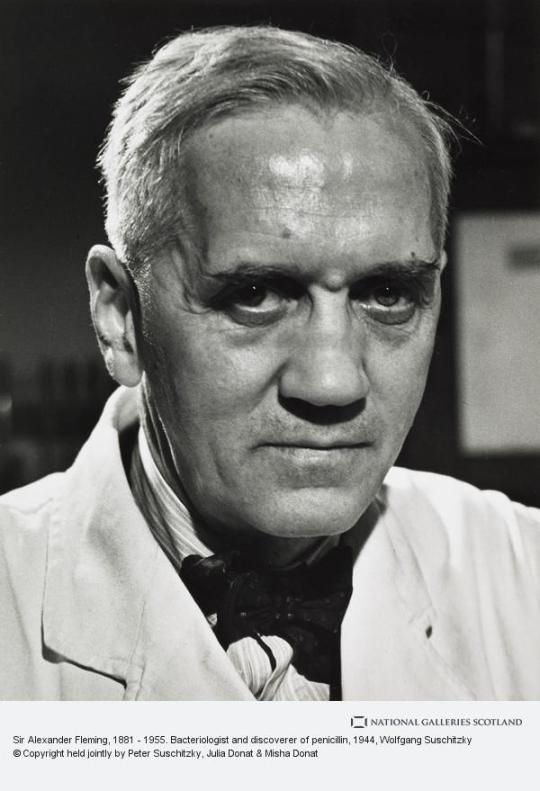
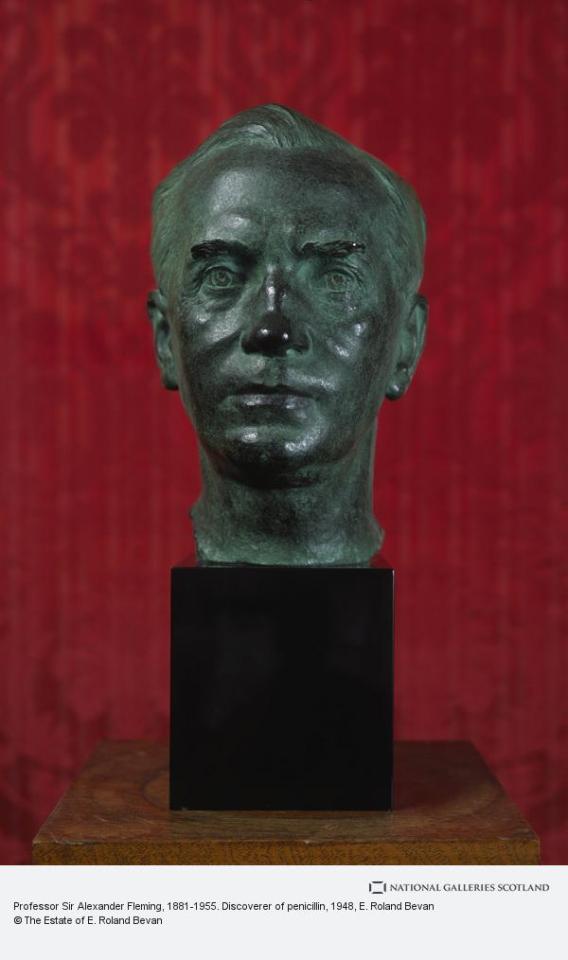
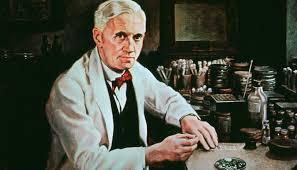
On 6th August 1881 Sir Alexander Fleming was born in Lochfield, near Darvel.
Well before Fleming accidentally discovered penicillin he tried to convince doctors in the field hospitals of World War One that treating wounds with antiseptic, not only cleaned the wounds but also lowered the soldier’s natural resistance to infection because they were killing white blood cells. His mentor Almroth Wright believed that a saline solution – salt water – should be used to clean deep wounds, because this did not interfere with the body’s own defenses and in fact attracted white cells. Fleming proved this result in the field.
Wright and Fleming published their results, but most army doctors refused to change their ways, resulting in many preventable deaths.
After the war Fleming discovered an enzyme called Lysozyme, an important role in the prevention of bacterial infections, while this was an important breakthrough in preventing infections in the first place it had little or no effect on many other microbes that infect humans. Lysozyme is present in the body, for instance it is i in tears, saliva, sweat, and other body fluids, It destroys bacteria that attempts to enter our body through these passageways. In the case of tears, they protect our eyes from bacterial invaders.
Fleming had left a jar of mould unattended during a holiday. On returning to work he noticed that a jar of Staphylococcus bacteria – a green yellow mould – had covered the dish except one area which was clear of the bacteria – rather like a halo effect.
This was Fleming’s great Eureka moment – the moment he correctly deduced that some antibacterial agent had crept in and successfully stopped the bacteria. He later identified this antibacterial agent as a rare form of Penicillium notatum which had drifted in from a mycology lab nearby. He later talked about the importance of chance in this discovery.
"I have been trying to point out that in our lives chance may have an astonishing influence and, if I may offer advice to the young laboratory worker, it would be this—never neglect an extraordinary appearance or happening. It may be—usually is, in fact—a false alarm that leads to nothing, but may on the other hand be the clue provided by fate to lead you to some important advance."
Fleming named this fungus penicillin and tried to grow it in his lab. He published his discovery in the “Journal of Experimental Pathology” in 1929 but did not receive much attention at the time as most of his clinical trials had been inconclusive and penicillin could not be produced in large enough quantities to be useful. Fleming was convinced that the fungus had limited usefulness but his research was taken up by two researchers from Oxford University named Ernst Chain and Howard Florey. These two were successful in producing purified penicillin which became indispensable during World War II, and helped to save thousands of lives through its use in antibiotics. In 1945, as a result of their combined efforts and discoveries, Fleming, Chain and Florey were jointly awarded the Nobel Prize in Medicine.
So the untidiness of a Scottish scientist ultimately led to countless many lives being saved, Fleming himself predicted that one day the antibiotics might be less effective, as is the case nowadays, we wait in hope of another "accident"
31 notes
·
View notes
Note
Boogie Man, Utionium and Bubbles!! ~@soft-spooks (good luck in class btw u got this!)
Thank you! I did okay for class when you send this Ask but I am now back in class and Im hoping it go well today ;w; thank u for the well wishes 💕💕💕
The Boogie Man 🎵 — Quick! Put your favorite playlist on shuffle and list the first five songs that come up!
My playlist basically went Mr.Worldwide 🧍♀️🏃♀️🏃♀️
Professor Utonium 🥼 — Are there any scientific inventions or discoveries that fascinate you?
You heard of girlies telling true crime like tea so let me talk about antibiotics like them too 💅
Radioactive is cool but the history of Penicillin (the first pure Antibiotic) is one of my fav. Im just gonna write a very simplified version of it after rereading it just now lol
There's reports of usage of mold to treat infection way way back before the 20th century especially in ancient greek and egypt but the creation of the first fully synthetic and commercialise antibiotic only started during the early 40s so like if you get any bacterial infection from uhhh lets say a cut on your pinky, you rubbed your eyes with a dirty hand, you look as someone at the wrong time, you had a hanky panky with Patty at the back alley or maybe you just exist, you can die. Existing antimicrobial meds like sulfanilamide even the strongest one sometimes doesnt work with diseases that in modern days we can simply heal with just 1 course of antibiotics.
Anyway how we discovered Penicillin was purely by accident when back in 1929, Alexander Fleming discovered one of the strep strain he was cultivating in his petri dish that he left for a few days for a holiday seemed off. Upon closer inspection he realized there's a strain of mold that grew on the dish and noticed that the bacteria didnt grow around the mold ring so he conducted a few experiments to comfirm his discovery and ended up publishing a paper about his findings. Despite this though no one wanted to do anything about it. They read the paper and just left him on seen and Fleming wasnt a chemist, he's a biologist, the lowest of the low for the nerds back in the 19th century because all the cool kids major in physics and studying radioactive and actively promoting radioactive quackery while their jaw is rotting off from the radium exposure so he couldn't do anything about it and he just let his research in the back burner until like 10 years later a group of nerds at Oxford found his paper and like "wait this man was actually cooking" and decided to take the challenge to purify this mold juice and see if they can turn it into an antibiotic.
In early stages of their research, there didnt use like a big steep container to 'procure' the mold but instead uses a narrow container with large surface area, think of casserole dish to get the juice because the mold only grows on the surface of the liquid instead of inside the liquid. Purifying isn't easy, at least 2000 litres of purified Penicillin juice were needed just to make antibiotics enough to treat 1 person so 2 of the big nerds, Howard Florey and Norman Heatley flew to the US and asked if anyone could mass produce it and then like jump to idk pages of wikipedia page later it was being mass produced in the early 40s during the peak of WW2 (there's too many conflict happens during this and the girls are fighting over who should be credited for it and I am not into some nerd drama rn)
Here's some interesting facts that I found out while reading:
- During the early stages of mass production, they still haven't produce enough Penicillin for the people they're treating and running clinical trials and they discovered that patients who received Penicillin shot also excreted those antibiotics back into their urine. At least 70% of the Penicillin they got is stored in the balls floating in the urine so they took the pee, crystallised them and extracted the Penicillin from the pee crystals so at least half of the people who gets the antibiotics shot got them from some guy's pee.
- When Florey and Heatley planned to fly to the US, they feared they couldn't bring the mold in a small glass tube without it being missing so they laced the pocket of their coat with the mold.
- Winston Churchill almost died from Pneumonia back in 1943 but fully cured by Sulfanilamide but the tabloid at time said Penicillin cured him simoly because they wanted to instill confidence to the public about antibiotic
- During Clinal Trials, they tested on animals for toxicity but they didn't tested it on guinea pigs. If they tested it on guinea pigs there's a possibility that antibiotics is not what we have now or didn't exist at all since Penicillin is toxic to guinea pigs
Anyway cut to decades later we abused the fuck out of antibiotics and there's rising cases of antibiotics resistant bacteria. It is estimated that we are 5 years away from creating antibiotics that works on the bacteria that resist antibiotics in the present. So the next time if you are prescribed with antibiotics, FINISH THEM ACCORDING TO DR'S ORDERS!!!
Bubbles 🫧 — List three things that bring you joy!
Answered here!
#stuck-in-the-ghost-zone#ask#thank you for the ask 💕💕#anyway ooh i had fun writing out about the penicillin thing I never had the chance to talk about it#put aside the atrocities of the war I love reading up advancement of science and technology during the ww2#i find it interesting that when we put trust in science and pair it up with the pettiness and cruelty of each nation to one up each other#we see how we can absolutely create something so useful so beautiful yet so cruel#we created the pill that saves so many lives yet we also create bombs that could end so many lived as well#*lives
7 notes
·
View notes
Text
shout out of the penicillium mold that is the basis of making penicillin, i was hoping it would make an appearance especially in the last of us. cool fungi fact! did you know penicillin is made from a fungus that grows on spoiled food that is fermented in a specific way and then separated from the mold and purified for medical use? the more you know!
#using fungus to fight infections while an fungal infection apocalypse is happening. dramatic irony#the last of us#penicillium#anyways the fungal kingdom is extremely cool#see a fungus isnt always bad. its just that sometimes they arent always fungis#<- hope ellie would like that one#tlou
22 notes
·
View notes
Text
it's always funny to be when people try to scare me off t with like "but it's an UnTeStEd chemical that you're taking!!1" when testosterone was literally first approved for medical use in 1939. before purified penicillin.
8 notes
·
View notes
Text
Penicillin Drugs Market to Witness Excellent Revenue Growth Owing to Rapid Increase in Demand
Penicillin’s are a type of antibiotics derived from Penicillium moulds, especially P. chrysogenum and P. Rubens. The majority of penicillins in scientific use are chemically synthesised from naturally going on penicillin’s. Although quite a few herbal penicillins have been discovered, solely two purified compounds are presently in medical use: penicillin G (intravenous use) and penicillin V (oral use) (given through mouth). Penicillins had been amongst the first antibiotics to be nice towards a broad vary of staphylococcal and streptococcal infections. They belong to the category of antibiotics recognized as -lactams. [2] They are nevertheless broadly used these days for a variety of bacterial infections, even though many sorts of micro organism have developed resistance as a end result of their massive use. Adverse results diarrhoea that is both watery or bloody; Fever, chills, physique aches, and flu-like symptoms, Unusual bruising or bleeding, as properly as uncommon weakness; Urinating much less often or no longer at all; Severe rash, itching, or peeling of the skin; agitation, confusion, uncommon ideas or behaviour; or Seizure.
Free Sample Report + All Related Graphs & Charts @: https://www.advancemarketanalytics.com/sample-report/183861-global-penicillin-drugs-market?utm_source=Organic&utm_medium=Vinay
Latest released the research study on Global Penicillin Drugs Market, offers a detailed overview of the factors influencing the global business scope. Penicillin Drugs Market research report shows the latest market insights, current situation analysis with upcoming trends and breakdown of the products and services. The report provides key statistics on the market status, size, share, growth factors of the Penicillin Drugs The study covers emerging player’s data, including: competitive landscape, sales, revenue and global market share of top manufacturers are Merck & Co., Inc. (United States), Allergan plc (AbbVie) (United States), GlaxoSmithKline plc. (United Kingdom), Pfizer Inc. (United States), Melinta Therapeutics (United States), Basilea Pharmaceutica Ltd. (Switzerland), Tetraphase Pharmaceuticals (United States), Paratek Pharmaceuticals, Inc. (United States), Nabriva Therapeutics plc (Ireland), Spero Therapeutics (United States)
Thanks for reading this article; you can also get individual chapter wise section or region wise report version like North America, Europe or Southeast Asia.
0 notes
Text
Throughout history, there have been individuals who seemed to possess an uncanny streak of luck, encountering circumstances or opportunities that propelled them to great heights. These fortunate few managed to harness their good fortune and transform it into remarkable achievements and contributions that shaped the course of history.
From accidental discoveries to unexpected windfalls, their stories captivate our imagination and inspire us to believe in the power of serendipity. In this exploration, we delve into the lives of some of the most lucky men in history, examining the remarkable journeys that led them to success and acclaim. Join us as we unravel the threads of fate that wove their stories, showcasing the interplay between luck and human endeavor that can lead to extraordinary outcomes.
Alexander Fleming
Alexander Fleming (1881-1955) was a Scottish biologist, pharmacologist, and Nobel laureate who made one of the most significant medical discoveries in history. Born on August 6, 1881, in Lochfield, Scotland, Fleming's work revolutionized the field of medicine and saved countless lives.
Fleming's most notable achievement was the discovery of penicillin, the world's first antibiotic. In 1928, while working at St. Mary's Hospital in London, Fleming accidentally stumbled upon this groundbreaking finding. He had been studying staphylococci bacteria when he noticed that a petri dish containing the bacteria had been contaminated with a mold called Penicillium notatum. To his surprise, he observed that the bacteria surrounding the mold had been killed off. This observation led him to realize that the mold was producing a substance with powerful antibacterial properties.
Fleming named this substance "penicillin" and began to investigate its potential uses. He conducted further experiments to isolate and purify penicillin, demonstrating its ability to kill various disease-causing bacteria. However, Fleming faced challenges in producing the antibiotic on a large scale and initially struggled to garner widespread interest and support for his discovery.
It wasn't until the 1940s, during World War II, that penicillin's potential was fully recognized. With the rise of infections among wounded soldiers, the need for an effective antibiotic became paramount. Scientists Howard Florey and Ernst Chain, along with others, built upon Fleming's work and successfully developed methods to mass-produce penicillin. Their efforts resulted in the widespread availability of this life-saving drug, which proved instrumental in treating bacterial infections and reducing mortality rates.
In recognition of his extraordinary contribution, Alexander Fleming, along with Florey and Chain, was awarded the Nobel Prize in Physiology or Medicine in 1945. His discovery of penicillin marked a turning point in medicine, leading to the development of numerous other antibiotics and revolutionizing the treatment of bacterial infections.
Beyond penicillin, Fleming made significant contributions to various fields of microbiology and immunology throughout his career. He also investigated the properties of lysozyme, an enzyme that destroys bacteria, and researched the prevention and treatment of diseases such as pneumonia and meningitis.
Alexander Fleming's accidental discovery of penicillin and his subsequent dedication to advancing its potential transformed modern medicine and saved countless lives. His work serves as a testament to the power of scientific curiosity and the profound impact one individual can have on the course of human history.
Louis Zamperini
Louis Zamperini (1917-2014) was an American Olympic athlete, World War II veteran, and inspirational figure known for his incredible story of survival, resilience, and redemption. Born on January 26, 1917, in Olean, New York, Zamperini's life was marked by extraordinary challenges and remarkable triumphs.
Zamperini's athletic journey began in his teenage years when he discovered a passion for running.
He excelled as a track and field athlete, setting records and earning a spot on the U.S. Olympic team. In the 1936 Berlin Olympics, Zamperini competed in the 5,000-meter race and caught the attention of Adolf Hitler himself, who requested a personal meeting with him. Although he didn't win a medal, Zamperini's impressive performance foreshadowed the resilience he would demonstrate in the face of adversity.
However, the outbreak of World War II interrupted Zamperini's athletic career. He joined the U.S. Army Air Forces and became a bombardier in the Pacific theater. In 1943, his plane crashed into the Pacific Ocean during a rescue mission, leaving Zamperini and two other crew members stranded at sea for 47 harrowing days.
Enduring starvation, shark attacks, and treacherous weather conditions, Zamperini and his companions faced unimaginable hardships. They managed to survive by catching rainwater and catching fish, clinging to hope despite the desperate circumstances. Eventually, Zamperini and one of his crewmates were rescued by a Japanese patrol boat and taken as prisoners of war.
For the next two years, Zamperini endured severe mistreatment, brutality, and torture at the hands of his captors in various Japanese prison camps. He faced relentless physical and psychological abuse, yet managed to maintain his spirit and resilience, refusing to break under the pressure.
Zamperini's story took an unexpected turn when World War II came to an end. He was liberated in 1945 and returned to the United States as a hero. However, the traumas he endured during the war took a toll on his mental and emotional well-being, leading him down a path of anger, alcoholism, and despair.
It was during this dark period that Zamperini found redemption through his Christian faith. Attending a religious revival meeting led by Billy Graham, he experienced a profound spiritual awakening that transformed his life. Zamperini forgave his former captors and dedicated himself to spreading a message of forgiveness, hope, and resilience.
Zamperini's remarkable story gained widespread recognition when it was chronicled in Laura Hillenbrand's bestselling book "Unbroken: A World War II Story of Survival, Resilience, and Redemption" and its subsequent film adaptation directed by Angelina Jolie.
Throughout his life, Zamperini became an inspirational speaker, sharing his experiences and the lessons he learned about the power of forgiveness, perseverance, and the indomitable human spirit. He continued to inspire others through his charitable work and involvement in various organizations.
Louis Zamperini's life exemplifies the strength of the human spirit in the face of unimaginable adversity. His story serves as a reminder of the resilience and courage that can be found within us, even in the darkest of times. Zamperini's legacy continues to inspire and uplift people around the world, leaving an enduring impact on the hearts and minds of those who hear his incredible tale of survival and redemption.
Christopher Columbus
Christopher Columbus (1451-1506) was an Italian explorer and navigator who is widely credited with leading the first European expedition to discover the Americas. Columbus's voyages across the Atlantic Ocean had a profound impact on world history, shaping the Age of Exploration and leading to significant historical consequences.
Born in Genoa, Italy, in 1451, Columbus developed a passion for exploration and navigation from a young age. He embarked on numerous maritime journeys, gaining valuable experience and knowledge of navigation techniques and trade routes. Inspired by his studies and the prevailing belief in the possibility of reaching Asia by sailing west, Columbus sought support for his ambitious plan to find a western route to the lucrative spice trade.
After facing rejection from several European rulers, Columbus finally gained the sponsorship of King Ferdinand II and Queen Isabella I of Spain in 1492. On August
3 of that year, he set sail with three ships—the Santa Maria, the Pinta, and the Niña—embarking on what would become his most famous voyage.
On October 12, 1492, after weeks of sailing across the Atlantic, Columbus and his crew sighted land in the present-day Bahamas, believing they had reached the Indies (Asia). This encounter marked the beginning of European exploration and colonization in the Americas. Columbus subsequently made additional voyages to the Caribbean, exploring various islands, including Cuba and Hispaniola (now Haiti and the Dominican Republic).
Columbus's voyages, often referred to as the "Columbian Exchange," had far-reaching consequences. They initiated widespread contact between Europe and the Americas, leading to the exchange of plants, animals, diseases, and cultures. This contact significantly impacted the world's ecosystems, economies, and demographics. However, it's crucial to acknowledge that Columbus's arrival also had devastating effects on the indigenous populations of the Americas, including forced labor, enslavement, and the introduction of diseases to which they had no immunity.
Despite his historical significance, Columbus did not fully comprehend the true nature of his discoveries. He maintained the belief that he had reached the outskirts of Asia until his death. Nonetheless, his expeditions opened up new trade routes and spurred further European exploration and colonization in the New World.
The legacy of Christopher Columbus is a topic of ongoing debate and reevaluation. While he is traditionally celebrated for his role in bridging the Old World and the New World, the impact of his actions on indigenous populations and the complex consequences of colonization are also important aspects to consider.
Christopher Columbus's voyages remain significant milestones in world history, representing a turning point in global exploration and forever altering the course of human civilization. They sparked a wave of exploration, colonization, and cultural exchange that shaped the modern world and laid the foundation for the interconnectedness of nations and peoples across continents.
0 notes
Text
Isolation, Purification and Characterization of Pectinase Enzyme from Streptomyces Thermocarboxydus- Crimson Publishers
Isolation, Purification and Characterization of Pectinase Enzyme from Streptomyces Thermocarboxydus by Priyanka SB in Journal of Biotechnology & Bioresearch
Pectinases, commonly referred to as pectic enzymes, are an important class of enzymes for their uses in industries like wine, paper, and food for the processing of fruits, vegetabless, tea, coffee, and can be extracted from actinomycetes, a group of bacteria popular for research for such products as the penicillin and pectinases. Such pectinase enzymes that will work at high temperatures and at appropriate pH conditions can be of benefit at high temperatures, which can be used to speed up these processes. Speed of processing gives an economic gain in commercial applications. This study involved the isolation, purification and characterization of pectinase enzyme from Streptomyces thermocarboxydus.
Soil bacterial isolation resulted in seventeen different types of colonies and these from petri were transferred to agar and cultured on pectin containing media at 37 °C temperature, and the strain showing maximum pectin clearing detected with iodine vapor. The selected isolate was first sent for sequencing using rRNA technology and phylogenetic analysis. Experiments for culture optimization and enzyme characterization were carried out. The optimum pH and temperature for culture was found out to be 4 and 50 °C, and for the partially purified enzyme, maximum activity, at neutral and alkaline pH and 60 °C. Hence, this enzyme proves to be a promising candidate for commercial applications.
For more articles in our journal click on : https://crimsonpublishers.com/jbb/index.php
Read More Crimson Publishers Google Scholar Articles: https://scholar.google.com/citations?view_op=view_citation&hl=en&user=7ghZqYoAAAAJ&citation_for_view=7ghZqYoAAAAJ:HDshCWvjkbEC
0 notes
Text
Fantasy setting where Dwarves are the pinnacle of hygiene.
Underground cities with modern sanitation management.
Ale businesses thriving on purified Dwarven water.
Salons run entirely by Dwarves (EVERYONE wants those luscious Dwarven beards)
Dwarves inventing penicillin thanks to the mold in their caverns.
2K notes
·
View notes
Text
Jora Holiday Bio **Update 2021**
The following paragraphs contains information exclusively for the original series.
Full Name: Jora Ladybird Holiday
Age: 9, 29 (Ben10000); 39 (Ken 10)
Birthday: March 31/April 1 (she was born 11:59pm on March 31)
Species: Human
Race: African American
Fandom: Ben 10 (classic&reboot), The Secret Saturdays (crossover), Generator Rex (crossover), Cartoon Network/CN City (crossover)
Voice Claim: Kimberly Brooks; Brandy Norwood is another alternate choice
Character Role: Friend and love interest to Ben Tennyson
Powers/Abilities: Rot Inducement, Mycokinesis, Poison/Toxin Immunity, Self Healing/Regeneration, Moderate Chronokinesis (Time-Acceleration)
Items: Vials, Mini Lab, Gloves
Relationships
Family: Jeremy (father), Mavis (mother), Tasha (sister), Pattibelle (first cousin) Ginger (family friend); Kenny, Kendrix & Belle (future children), Devlin (adopted son/cousin in law(?))
Friends: Ben & Gwen Tennyson, Max Tennyson, Cooper Daniels, Richard Mortis, Mama G (future mentor)
Acquaintances: Ginger T. Glass, Tamika
Love Interest: Ben is her primary love interest, as seen with their eventual future together as well as hints and blatant displays of "puppy love."
Enemies: Pretty much every villain in this show; her personal arch-nemesis is Kudzu, a lifestyle expert & entrepreneur who initially tried to gentrify Jora's neighborhood & ruin her family's business. Other villains include Master Mortis (Richard's creator), and Kudzu's bounty hunters.
Appearance
- Dark Skinned African American girl
- Chubby, shorter than Ben and Gwen
- Has dark brown hair styled in twisted pigtails, pink hair scrunchies
- Black Bead Eyes//dark brown
- Wears lilac lacy gloves
- Wears three different outfits through the show:
- Season 1: Yellow t-shirt, pink shorts, beige sandals
- Seasons 2&3: Pink and Yellow striped tank top, orange skirt, and same sandals
- Season 4: Pink and white t-shirt, yellow capris with orange belt, and purple shoes
Personality
A sweet and quiet girl, Jora Holiday did not consider herself to be special. She lacked friends in school and kept to herself out of fear of getting bullied. This was because she had to deal with her mutant powers since they came into fruition as a very small child. Jora normally tries to avoid or deflate conflict, though deep down she does get a little fed up with playing peacemaker if the squabbling persists. Jora is compassionate and humble, never boastful but also bashful when it comes to compliments and praise. Of the four kids she is regarded as the nicest.
Because of her powers Jora has clean freak tendencies in her desire to look as normal as possible. She tried to avoid gross situations, although later down the line she learns it's okay to dirty her gloves - literally.
But with sweetness comes sourness, as she does have a passive-aggressive side towards slights, whether real or perceived. She didn't get along with Tasha, feeling as though the latter didn't care for her (which isn't true). Jora tends to be oversensitive and takes things too personally, ans even can be prone to tears if provoked hard enough. She also bears lingering resentment and shame over the partial ailments her element brings; these feelings fade away over time as she grows to accept her powers and adapt to her condition. One of her biggest flaws is her timidness and inability to stand up for herself and others. She also didn't get along with Ben for a while, though they get better quickly.
Jora has a love of nature, as shown with her hobby of collecting flowers and mushrooms. She despises animal abuse of any kind, and strives to be a bit more conscious of the environment. She also seems to have no phobia towards bugs, and thus is the designated "spider catcher" on the Rust Bucket.
Jora has a passion for fashion and a girly sense of style, preferring to dress in bright or pastel colors. Her love of nature and love of fashion could lead to a career based on environmentally friendly beauty products.
Ben 10000: Lavender shortsleeved dress and white apron
Adult Appearance
When she grows up Jora is considerably more capable of handling herself. She gets upset when people see and treat her as a fragile thing, seeing as though they don't trust her. She also is very in tune with nature, spending her days off on long walks in the forests, or at her homemade lab making potions.
In this timeline she was a waitress who worked after shifts as a vigilante. At the time the Hero of Heroes didn't know who this mysterious woman was, although he was struck by familiar feelings.
Ken 10: Mint Green blouse and pink maxiskirt with pink wristwatch (which is actually her transformation device)
Costume: White bodysuit with light purple accents, helmet and visor.
Powers:
Jora has the element of Decay (&Rebirth), which enables her to induce decomposition in organic material.
Techniques
- While not proficient at hand to hand she can run fast in short bursts and have stamina
- Generate spore clouds to obscure vision and block a person's airways
- Increase or decrease the rate the decay
- Increase or decrease the size of mushrooms, from giant prehistoric constructs to miniature samples to be used for medicine
- Create a slippery puddle of rot to make opponents fall
- Throw globs of inky, rotting matter to create fungus or for long range
- Autumn Leaf Tornado
- Create Penicillin (first "upgrade")
- Able to "purify" corrupted Mycellium in the episode "Camp Fear"
- Scavenger-animal Empathy
- Forensics (adult level)
- Fossil Fuel Manipulation (adult level)
- Floral Manipulation (adult level, possibly teen)
- Acid Spit (adult level)
- Hallucinations (teen level)
Weaknesses
- Her power has little to no effect on material such as metal, glass, synthetic fabrics, stones
- Has to wear her gloves at all times which can be tedious and uncomfortable
- Lacks strength and hand-to-hand proficiency
- Weak to extreme heat & cold
- Shroom Constructs can be easily destroyed if not continually reinforced
- Unable to control her powers if under extreme duress
- Requires weapons to compensate for elemental weaknesses
- Requires a source for better potency
Strengths
- Immune to Time related attacks since her powers are considered a form of chronokinesis
- Create healing potions
- Immune to mycotoxins and can decrease and even render dangerous mushrooms safe for consumption (handy for outdoor missions)
- Powers seem to increase in wet environments, the Moon
- Her kind gentle personality makes it easier for her to restrain the dangerous potential of her abilities
- Memorized enough species of fungi and has her own mini lab to safely store and carry samples
- Natural empathy towards others
- Quick learner, continually studies her powers and traits to adapt
Background
Born the second child to floral shop owners Jeremy and Mavis Holiday, Jora had a normal childhood in the comfy small town of Annville, SC. A quiet child, she spent after-school helping around the shop. They were small yet popular with the townsfolk, reputed for their knowledge of plants and colorful arrangements. However that normalcy took a detour when Jora's powers camemto fruition.
When people started to notice more and more plants dying, that in turn led to decrease in customers and soon the shop began to undergo financial trouble. One day, a beautiful woman named Kudzu came into the store offering to buy the place from Jeremy. See, Kudzu was one of the wealthiest and powerful people in town. He refused. The next day Kudzu came again with another proposition. Again Jeremy refused. This occurred all through the week, until finally a very irritated Mavis demanded Kudzu to leave their family alone. That time, Kudzu left and didn't ame back after that. The couple was relieved. Jora was nervous.
One day, just as Tasha and Jora were at the last day of school anf thr parents were off to cash in their winning lottery ticket, the floral shop caught fire! The firefighters were called and put out the blaze, but it left their shop and home in charred ruins.
Jora felt very guilty: if she never had her powers, there wouldn't have been such an awful domino effect. The fire was ruled as a freak accident, however Jeremy and Mavis believed that other forces were at work. They couldn't prove their theories as their suspect had too much power and leverage to be fought one on one. So they came up with a plan: they would spend the summer working to add money to the saved money while their kids go out of town. Mavis called upon an old friend from trade school to take the girls on vacation (somewhere safe from Kudzu).
The next couple of days after staying at a shelter, the girls were able to buy a few new outfits and essentials and told to wait for a brown and white RV. When the RV arrived, out came a older gentlemen in a bright scarlet Hawaiian shirt, with two children trailing behind him. He introduced himself as Max Tennyson, and the two kids were his grandchildren Ben and Gwen.
Trivia
Jora has a nature motif to contrast Ben's aliens and Gwen's magic.
Overall Jora is the most normal member of the team; her family has no connection to the Plumbers or magic.
Jora doesn't have signature color, the closest would be pink and yellow since those are colors she tends to wear the most of.
I made Jora so that there'd be another main girl in the cast and because the show didn't have a black female character (despite having nonwhite female characters of other ethnicities, and black male characters)
She does not have a major role in UAF; instead her storyline is seen as a spinoff (think Static Shock to the Justice League) focusing on smaller-scale plots with occasional cameos from main cast
Jora does come back in Omniverse to replace Gwen as the female lead; she is joined by Dr. Azura (Secret Saturdays OC), Myra Hopewell (GenRex), Ginger T. Glass, and her cousin Patti.
It is unknown whether her power is genetics or a random mutation.
In the Ben 10000 timeline she and Ben broke up because Ben tried to forbid her from going on active missions as a way to keep her safe. Obviously she didn't like that and left. They do reconcile at the end of the episode.
Out of my OCs for this fandom Jora is the lead character, followed by Kendrix
Jora's powers can vary based on the type of fungi she's using at the time. So her colors could range from inky-black to a gorgeous green
She is a candidate to take on the mantle of Mother Nature (currently held by Mama G)
Her hobbies are: reading comics and books primarily fantasy genre, costume design, hiking, floral pressing, DIY crafts, and insects
Due to her timid nature she has a fear of public speaking.
I don't have a claim for her in the live action films sorry!!
Jora is a foil for Kevin in that she was born with destructive powers. Unlike Kevin, she learned to rely on friends to help her stabilize her powers.
- A recurring subplot is the girls encountering and escaping from Kudzu's hired goons sent to track them down.
Jora was going to have standard plants and flowers as her power but I wanted to go for nontraditional elements instead.
The irony is that she's a softie dressed in bright colors and respects life, yet has a power related to death.
- At the end of the show she reunites with her parents and they're able to rebuild their business. She also stands up to Kudzu and exposes the woman for the rotten POS she is
Quotes:
"Pot, meet kettle. Kettle, meet face!"
"I like comic books. My favorite is the Fantasia Legends."
"If you're supposed to be Lucky Girl then why dress up like a black cat?"
"There's a lot of stories hidden beneath these trees. You just gotta know where to look."
"I'm not that scared little girl you used to pick on, Ben. I think you know I can take care of myself."
"Look I didn't get to choose my powers okay! But Kudzu chose to set our family's house on fire and I'm not gonna sit back and watch her hurt anyone else!"
"It's okay. I'll help you."
"It's called having good manners. You should try it sometimes."
"Leave. Them. Alone!"
"Please let this be a normal day this time!"
"You're like a mushroom. Unassuming at first, but something unique and vibrant!"
"Ben I don't know how to say this but... you're not alone. Don't ever think you're alone."
"I hope you'll be able to see that there's more to life than just money and business but until that day comes, we'll all do very well without you!"
"I may make things rot but the both of you are rotten to the core!"
Recent Pictures
Reference sheets for Omniverse

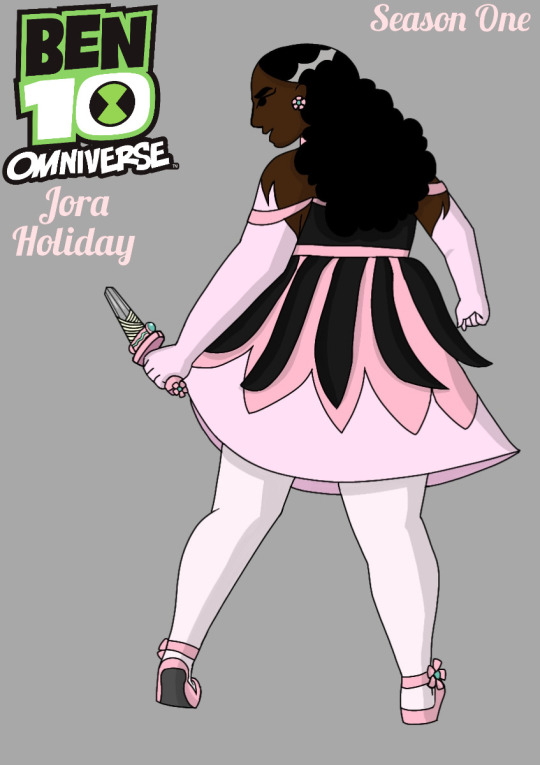
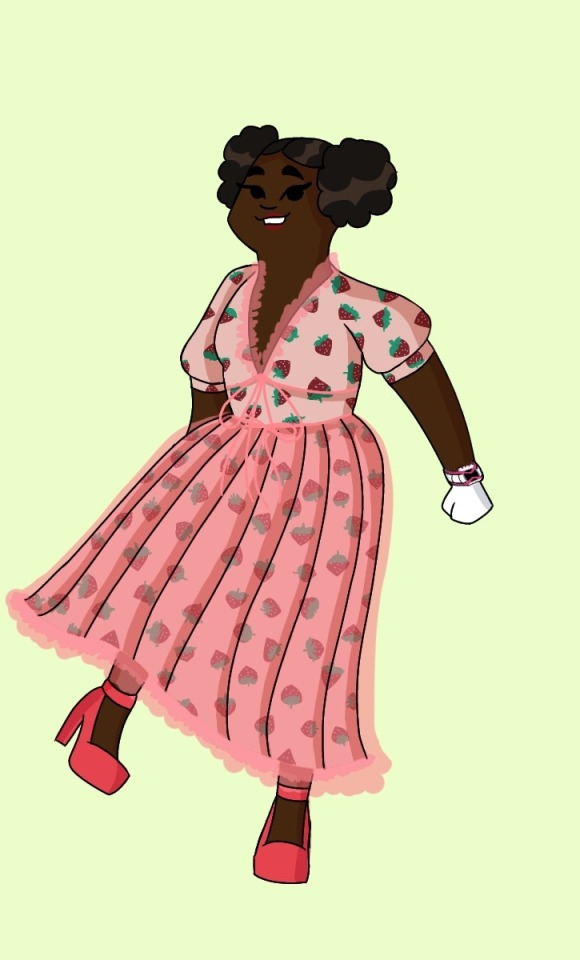
Sketches:



#oc bio#fyeahocsofcolor#ben 10#ben 10 original series#ben 10 oc#oc: jora holiday#canon x oc#love interest#oc x canon
22 notes
·
View notes
Photo
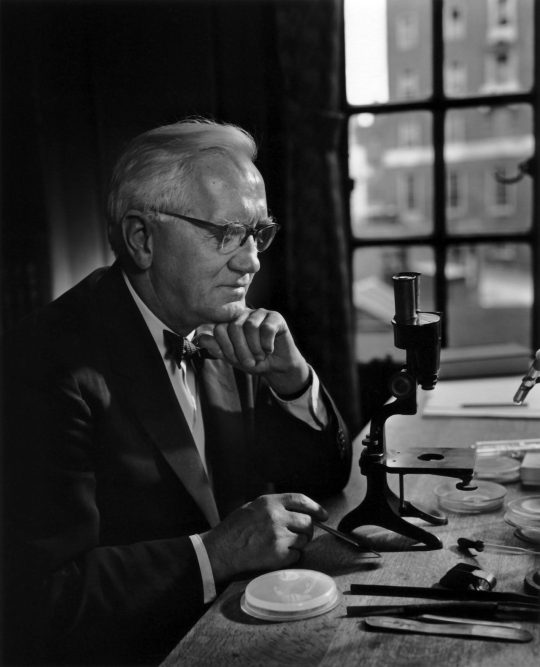
6th August 1881 saw the birth of Sir Alexander Fleming, the Nobel prize-winning bacteriologist.
Born in Lochfield, Ayrshire, Fleming was the seventh of eight surviving children in a farm family. His father died when he was seven years old, leaving his mother to manage the farm with her eldest stepson. Alexander, having acquired a good basic education in local schools, followed a stepbrother, already a practicing physician, to London when he was 13. He spent his teenage years attending classes at Regent Street Polytechnic, working as a shipping clerk, and serving briefly in the army during the Boer War), although he did not see combat.
Fleming became a lecturer at St. Mary’s, staying on until 1914 when he left to serve as a captain in the Army Medical Corps. During this experience, he realized that more needed to be done to save soldiers who suffered with infections from their wounds. His interest in bacteriology deepened. In 1918, he returned to St. Mary’s, where he continued to conduct research in the bacterial action of the blood, mucus, and other bodily fluids, searching for antibacterial substances that were non-toxic to animal tissues. In 1921, he discovered the bacteriolytic substance found in tears and other bodily secretions, which he named lysozyme, but this substance was not particularly strong.
In 1928, Fleming left his lab for a two-week vacation, and his failure to clean up his workspace resulted in one of the greatest medical discoveries of all time. He returned to the lab to find that a mold had accidentally developed on a staphylococcus culture plate that he had left out in the open. On the plate, a bacteria-free circle surrounded the yellow-green mold. This intrigued Fleming. He deduced that the mold must have released some substance that had inhibited the growth of the bacteria. He conducted experiments on the specimen and found that the mold culture prevented growth of staphylococci, even when diluted 800 times. The mold, he discovered, had been created by a spore of a rare variant called Penicillium notatum, which had likely drifted up from a mycology lab on another floor.
Fleming named this mold substance “penicillin” and reported his findings in 1929 in the British Journal of Experimental Pathology. However, his work would remain obscure for nearly a decade.
In 1939, a team of scientists at Oxford University, led by Australian physiologist Howard Florey, began working to identify and isolate substances from molds that could kill bacteria. Among the substances they studied was Fleming's penicillin. They were able to purify the substance and use it in experiments to treat mice who had been given lethal doses of bacteria. The experiments were overwhelmingly successful. Penicillin rapidly became a mainstream medical treatment for a variety of infections, such as syphilis, scarlet fever, diphtheria, and pneumonia. British and American drug companies began to manufacture the drug in large quantities, and by the end of World War II, it had saved millions of lives.
Fleming was elected Fellow of the Royal Society in 1943 and was knighted in 1944. Along with Florey and chemist Ernst Boris Chain, Fleming was awarded the Nobel Prize for Medicine in 1945. Fleming was named Emeritus Professor of Bacteriology at the University of London in 1948.
Over the course of his career, he authored numerous papers on bacteriology, immunology, and chemotherapy and was honored with many international awards, including honorary doctoral degrees from almost thirty European and American universities. He was Rector of Edinburgh University from 1951 to 1954.
Fleming died on March 11, 1955 and is buried in St. Paul's Cathedral in London.
24 notes
·
View notes
Text
Pandemic at the disco
There has been some radio silence. It’s been a month since I last wrote anything.
What a month it has been.
Obviously, we are in a pandemic. While social distancing is not a big deal to a homebody introvert like myself, I know it can become tiresome to others. I get it. It sucks. It sucks for everyone. My particular brand of anxiety is incredibly triggered by medical stuff, so this is kind of a living hell for me. I digress.
There is a lot of information flying around about Covid-19. It can be almost overwhelming. The main thing, though, is that you strictly follow the recommendations of your local health authority - in order to flatten the curve. Yeah, you might be young and might be able to get by with mild or no symptoms. You’re still a carrier, and can infect other people and make them sick.
This isn’t about you. It’s about us. Don’t be selfish, stay at home, stay away from other people. Wash your goddamn hands and don’t touch your face.
I wanted to address a few things that have been happening within the pagan and new age communities that are incorrect, unethical, and downright dangerous in regards to this virus:
- FLORIDA WATER IS NOT HAND SANITIZER. Holistic, beautiful smelling waters with essential oils ARE NOT HAND SANITIZER. Hand sanitizer needs to be made with a specific percentage of alcohol to be effective. Hand sanitizer should only be used if you cannot wash your hands, as that is the MOST effective way to stop spreading the virus. Many distillers are making hand sanitizer now, using the recipe recommended by the WHO.
- THIS IS NOT SOME SPIRITUAL AWAKENING. This is a pandemic, and thousands of people are dying. What makes their lives somehow less spiritual than yours? That is a very ego-centric view of the world. This is a virus that has mutated and become very effective at spreading and making people very ill. This is science, not some god unleashing pestilence on the world.
- SAGE DOES NOT PURIFY THE AIR OF ILLNESS. Burning sage can ENERGETICALLY cleanse a space - but it is not some magic smoke penicillin. If it was, do you not think that perhaps doctors and scientists would have found away to harness this?
- CORONA VIRUS CANNOT BE CURED BY EATING VEGAN, EATING VEGETARIAN, DRINKING WATER AND LEMON, OR EATING RAW, ORGANIC FOOD. There is no cure. That’s why it’s a pandemic. That’s why we are all inside. You could eat raw mangos off Apollo’s dick and still end up sick. THERE IS NO CURE. THAT IS WHY PEOPLE ARE DYING.
- CRYSTALS CANNOT CURE CORONA VIRUS. You can rub yourself with clear quartz and bloodstone until you’re raw and bleeding - still won’t cure you. See above point.
Okay, spiritual folks. I know we’re all trying to find something, ANYTHING, to connect to and explain what is going on. In troubled times, we often lean on our spiritual beliefs to try and make ourselves feel more in control, more centred, more in tune. We want to help. Here are a few things we can do, and some resources for coping.
- Lizzo did a meditation to promote healing. You can watch it here, and you can start your own meditation practice to help you centre yourself. If most folks are at home, no better time like the present to start something to help you cope.
- Read Light Magic for Dark Times by Lisa Marie Basile - you can order it online, or many libraries have extensive e-book catalogues and you can read it for free.
- Do rituals of release and healing. Make yourself a pile of paper worries about what is going on - every day, burn one in a firesafe dish and release it.
- Go outside, if you’re able. You don’t have to stay in the house, you just have to stay away from other people. Hang out on your balcony or your backyard, go for a drive and take a walk while observing social distance.
- start an indoor garden. I recently ordered myself an Aerogarden to grow some herbs and start some plants for replanting later as it gets warmer. Having something to tend to can be relaxing and grounding.
- Journal.
- Make art - spiritual or not. Take up a new artistic hobby, or pick an old hobby back up. Give yourself something to focus on. For example, you can cross stitch and weave intention into every stitch to enchant it for whatever purpose.
- start the Goodreads reading challenge. Now would be a great time to get some reading done.
- Do some online classes. Many magical practitioners are now offering classes online. Consider supporting them, or seek out some free classes! I know Gede Parma and Sabrina Scott have been doing some online work.
All in all, do your best to stay calm, think critically, listen to the health authority, stay home, and WASH YOUR HANDS.
Stay healthy. all.
24 notes
·
View notes
Text
Top 10 greatest inventions That Changed the World

Human beings are a nifty little species. Though we have been on earth for a comparatively short period of time (Earth is normally 4. five billion years old), contemporary Homo sapiens possess imagined up and created some amazing, far-out sometimes, things. From the brief moment somebody bashed a rock on the ground to make the first sharp-edged tool, to the very first of the wheel to the development of Roter planet (umgangssprachlich) rovers and the Internet, several key advancements stick out as revolutionary particularly. Here are our top picks for the most crucial inventions of all right time, along with the science at the rear of the invention and how they will come into being.
1- wheel
Prior to the invention of the wheel in 3500 M. C., humans were limited in just how much stuff we’re able to transport over land severely, and how much. Evidently, the wheel itself wasn’t the most challenging component of “inventing the steering wheel. ” In order to come period for connecting a non-moving system compared to that rolling cylinder, issues got difficult, relating to David Anthony, a teacher of anthropology at Hartwick College.
“The stroke of brilliance was the wheel-and-axle idea, ” Anthony told Live Technology previously. “But then which makes it was also hard. ” For example, the holes at the guts from the tires as well as the ends of the set axle assemblies had to be almost perfectly circular and soft, he stated. How big is the axle was a crucial factor also, as was it is snugness inside the hole (of course not too small, however, not as well lose, either).
The hard work paid, big time period. Wheeled carts facilitated commerce and agriculture by enabling the transportation of goods to and from marketplaces, and also easing the burdens of people touring great distances. Right now, wheels are essential to the lifestyle, present in from lighting to automobiles to generators.
2- The nail
Without nails, civilization would crumble. This important invention goes back a lot more than 2, 000 years to the Ancient Roman period, and became feasible just after human beings developed the capability to cast and form metal. Previously, hardwood structures needed to be built by interlocking adjacent boards a more arduous construction process geometrically.
Before the 1790s and early 1800s, hand-wrought nails were typical, with a blacksmith heating a square iron rod and hammering it on four sides to make a point then, according to the College or the University of Vermont. Nail-making machines came between the 1790s and the early 1800s online. Technology for designing nails continued to progress; After Holly Bessemer created an activity to mass-produce metal from iron, the iron fingernails of yesteryear waned and by 1886, ten percent of U. S. fingernails were produced from soft steel wire, regarding the School of Vermont. By 1913, 90 percent of nails stated in the U. S. was a metal wire.
In the meantime, the mess a more powerful but harder to- insert securer is considered to have been invented simply by the Greek college student Archimedes in the 3rd century B. C.
3- The compass
Old mariners navigated by the stars, but that technique did not work throughout the day or on cloudy evenings, therefore it had been unsafe to voyage far from land.
The Chinese invented the first compass sometime between your 11th and 9th century; it was made of lodestone, a naturally-magnetized iron ore, the appealing properties which they had been learning for years and years. (Pictured is a style of a historical Chinese compass from the Ryan Dynasty; it really is a south-indicating ladle, or Sinan, manufactured from polished lodestone. ) Soon, the technology passed to Arabs and Europeans through nautical contact. The compass enabled mariners to navigate definitely not land safely, raising ocean trade and adding to age Development.
Also, learn Why Inventors Switch to Professionals Like Invent Help
4- The printing press
The German Johannes Gutenberg invented the printing press around 1440. Key to its advancement was the tactile hand’s mold, a fresh molding technique that allowed the quick creation of large levels of metallic movable type. Although others before him - including inventors in Cina and Korea - acquired developed portable type made from steel, Gutenberg was the first ever to create a mechanical procedure that transferred the ink (which he created from linseed essential oil and soot) from the removable type to paper.
With this movable type process, printing presses increased the acceleration with which book copies could possibly be made exponentially, and thus they led to the widespread and rapid dissemination of knowledge for the very first time in history. Twenty million volumes have been printed in Western European countries by truck.
Among other activities, the printing press allowed wider usage of the Somebody, which resulted in alternative interpretations, including those of Martin Luther, whose “95 Theses” a document imprinted by the hundred-thousand sparked the Protestant Reformation
5- The inner combustion engine
In these motors, the burning of gas releases a high-temperature gas, which, since it expands, applies a potent force to a piston, moving it all. Thus, combustion engines convert chemical substance energy into mechanized work. Years of architectural by many scientists proceeded to go into designing the inner combustion engine, which required its (essentially) modern type in these half from the 19th hundred years. The engine ushered in the Commercial Age group, as well as allowing the invention of an enormous variety of machines, including modern aircraft and cars.
Pictured will be the operating steps of a four-stroke inner burning engine. The strokes are the following: 1) Intake stroke - air flow and vaporized gas are used. 2) Compression stroke - energy vapor and air flow are compressed and ignited. 3) Power heart stroke - gasoline combusts and the piston is pushed down, powering the device. 4) Exhaust system stroke – exhaust is certainly driven out.
6- The phone
Though several inventors do pioneering work on the electronic tone of voice transmission ( many of who later submitted intellectual real estate lawsuits when telephone make use of exploded), Alexander Graham Bell was the first to be awarded an obvious for the electric phone in 1876. His patent drawing above is pictured.
Even though many creators did pioneering focus on digital voice transmission ( a lot of whom later on filed rational property legal cases when telephone use exploded), Alexander Graham Bell was the first ever to end up being awarded a patent pertaining to the electrical telephone in 1876. ( His patent drawing is usually above. ) He drew his motivation from teaching the deaf and appointments to his hearing-impaired mother also, according to PBS. He called the initial phone an “ electric speech machine, ” relating to PBS.
The invention took off and revolutionized global communication and business. When Bell passed away upon Aug. two, 1922, regarding PBS, U. H. telephone assistance stopped for a full minute to honor him.
7- The lamp
When all you need is daylight, productivity is bound to hours of sunlight. Lights changed the global world by allowing us to be active at night. According to historians, two dozen individuals were a key component in inventing incandescent lights through the entire 1800s; Thomas Edison is definitely acknowledged as the principal inventor as they produced a totally functional light system, including wiring and generator in addition to the carbon-filament bulb like the one above, in 1879.
And also starting the introduction of electrical power in homes throughout the burkha, this invention also had a fairly unexpected consequence of fixing people’s rest patterns. Rather than going to sleep in nightfall (having nothing at all otherwise to accomplish ) and sleeping in sections through the entire night separated by intervals of wakefulness, we have now stay up except for the 7 to 8 hours allotted meant for sleep, and, ideally, we rest all of them at once.
Also, learn The vibrant business of invention ideas
8- Penicillin
Is actually probably the most famous discovery tales ever sold. In 1928, the Scottish scientist Alexander Fleming observed a bacteria- packed Petri dish in his lab with its cover accidentally ajar. The test experienced become contaminated with a mold, and the mold was almost everywhere, the bacterias were lifeless. That antiseptic mold ended up being the infection Penicillium, and over another 2 decades, chemists purified it and created the drug Penicillin, which fights a wide array of microbial attacks in humans without harming the human beings themselves.
Penicillin was being produced and advertised by 1944 mass. This poster mounted on a curbside mailbox advised World Battle II servicemen to consider the medication to rid themselves of venereal disease.
About 1 in 10 folks have an allergic attack towards the antibiotic, according to the study published in 2003 in the journal Clinical Critiques in Immunology and Allergy; even so, most of those social people go on to be able to tolerate the drug, experts said.
9- Contraceptives
Not really only have birth control pills, condoms and other forms of contraceptive sparked a sexual trend in the developed globe by enabling women and men to have sexual intercourse designed for leisure instead of procreation, they will also have significantly reduced the common quantity of offspring per woman in countries exactly where they are utilized. With fewer mouths to feed, modern families have achieved higher standards of living and can offer better for every young child. On the other hand, around the global level, contraceptives are helping the human population level off gradually; our amount will stabilize by the finish of the century probably. Certain preventive medicines, such as for example condoms, curb the pass on of sexually transmitted illnesses also.
Herbal and organic contraception offers been used for millennia. Condoms arrived to use in the eighteenth century, as the earliest oral contraceptive “the tablet ” was developed in the past due 1930s by a chemist called Russell Marker.
Researchers are ongoing to create developments in the contraceptive, with some labs even pursuing a male form of “the pill. ” A permanent birth-control implant called Essure was approved by the Drug and Food Administration in 2002, though in 2016, the implant was warned by the FDA would need more powerful warnings to tell users about serious risks of using Essure.
10- The internet
It certainly desires no introduction: The global program of connected with each other computer systems referred to as the web is used simply by billions of individuals worldwide. Countless people helped develop this, however, the person most credited using its invention is the computer scientist Lawrence Roberts often. In the 1960s, a united team of pc scientists doing work for the U. Ersus. Protection Department’s ARPA (Advanced STUDIES Agency) built a communications network to connect the computer systems in the company, called ARPANET. It used a way of data tranny known as “packet switching” which usually Roberts, a known member of the team, developed predicated on the prior function of additional computer researchers. ARPANET was your predecessor of the web.
1K notes
·
View notes
Text
Magic Plants
Hi guys! I wanted to share with you a few flowers and plants that I found in my parent’s backyard. I collected a few samples, couldn’t resist. Long post with pictures
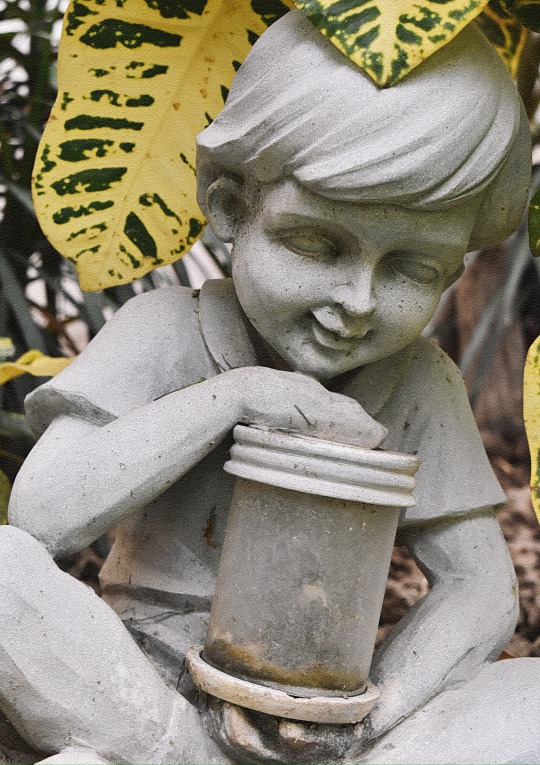
So my mom has this stone kid, lol. She calls him “Hugo” like the 1969 movie “The book of stone” maybe he’s the reason her garden is so pretty and full of magical properties haha. Have you seen the movie? It’s actually pretty creepy.
Nevertheless, I made some research about all of the plants and found some amazing properties in each. I want to share this post with you, because maybe you also have this plants in your backyard or near your home, and you don’t really know you can use them in your craft.
TI PLANT
Originally called “Ki” was a sacred plant to the Hawaiian God, Lono, and the Goddess of the Hula, Laka. It meant “divine power”, and later on was recalled “Ti Plant”. Legend has it, it’s also the incarnation of Apollo. This plant releases positive energy, brings luck, happiness and resists evil souls and spirits. That’s why many people decide to have them in their homes.

CROSSANDRA
One of the most chosen variety flowers for folk medicine. Is a well known medicinal plant in various religions in India. It has amazing healing properties. You can use it for fever, headaches, physical wounds, and overall pain. Use it in your craft to attract health. Also you can use it in potions.

CROWN OF THORNS
Don’t let this beautiful and attractive to the eye flower fools you, it’s highly toxic and dangerous. It comes in a variety of colors. Its milky juice contains a toxin called “Phorbol Easter” which can irritate skin and cause severe stomach pain if it has contact with the skin. It might cause vision loss or even blindness if it reaches your eyes. Many believe that its thorns were used to make the crown made by the Romans to Jesus. You can use this plant in shadow work or in directed spells and rituals. Just remember being careful. Keep your pets away from it.


GOLDEN DEWDROPS
Many believed this grass weed was useless, until it bloomed. Its name was given thanks to the beautiful grapes and flowers that blooms from it. Under the sunlight they have a glittery and translucent color like dewdrops. As it belongs to the family of Vervain, the Golden Dewdrops symbolizes evil and witchcraft. Both, flowers and leaves can be used in talismans and amulets to bring protection and peace. Also it’s perfect for rituals.
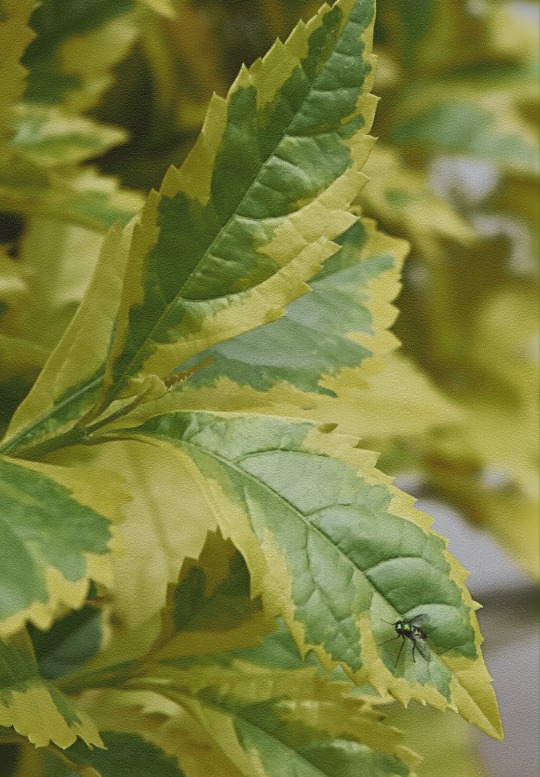
PETRA CROTON
As most of their family, the Croton is a toxic plant for humans and animals when ingested, tho is not the most poisonous. Got its name thanks to the variety of foliage it has in nature. It’s used in gardens, bedrooms, hotels, and many places to bring color and life to a space. It was once used as a purgative plant, tho nowadays it’s mostly used aesthetically. It represents change, and new beginnings. You can use it in spells, talismans or amulets. Don’t eat it.
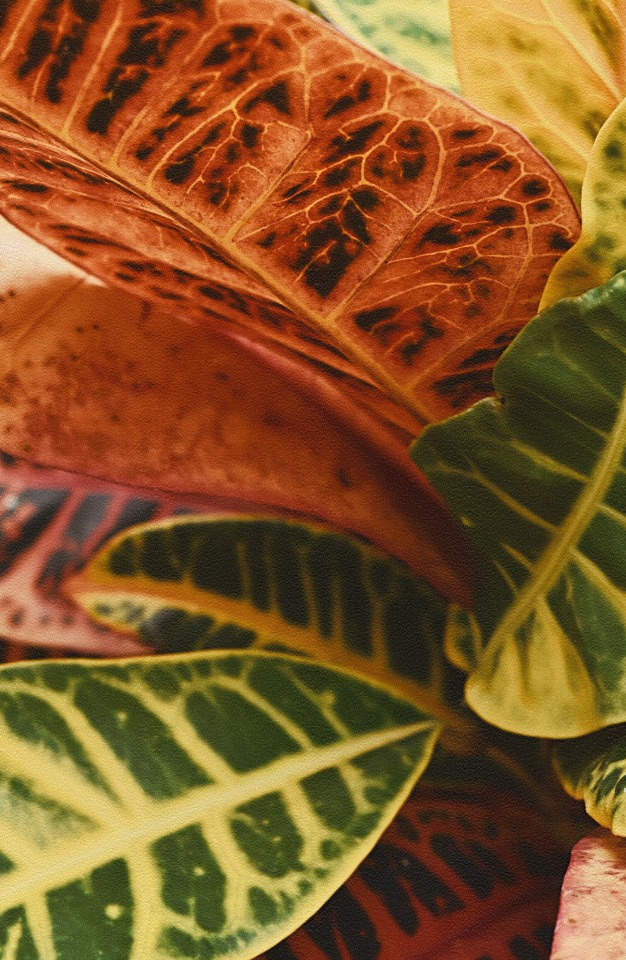
FIRECRACKER PLANT
Its tubular, most commonly red, flowers give it its name. Making it showy and appealing to humans. It grows and expands as rapidly as Bamboo, so keep in mind your garden space. It attracts bees, butterflies, hummingbirds and other pollinators. It was used by Native Americans to treat spider and snake bites, stomach pain, backache, and burns. As it represents life and growth, you can use it to attract not only those properties, but also healing.
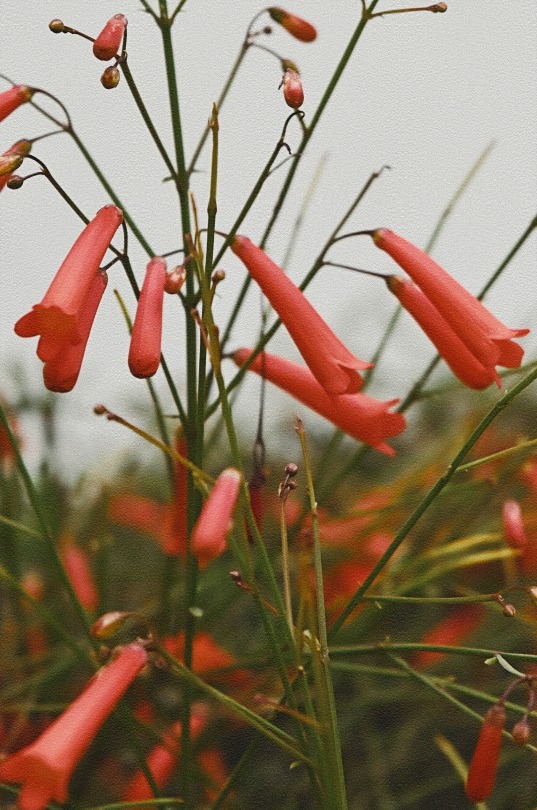
MADAGASCAR PALM
At least 12 species of palms were used in African medicinal and spiritual rituals over the years. The seeds are used as oracles, the leaves and flowers as offerings. In other cases the extracted oil was used as a healing mixture. As many believe, when a person got sick, it wasn’t only a physical sickness, but more spiritually. It was related to witches, sorcerers, broken taboos, or displeased ancestors spirits or deities, so the palms where used to cleanse the spirit and alleviate the patient from the suffering. You can use seeds, flowers and leaves as oracles, offerings in your altars, or use them in rituals and spells to attract protection and spiritual healing.

AFRICAN VIOLET
The original seed was discovered in 1892 by German Baron Paul, in an African colony. He then sent it to Germany where first appeared in a flower show and recalled as one of the most interesting plants. Part of the succulent family it helps purify indoor air quality, improving one’s mood and relieving stress. It was used in traditional herbal incense. You can use it in talismans and amulets to bring protection and promote spirituality. Or in spells and rituals. Won’t recommend ingesting it tho.

XANADU
Many humans are attracted to this plant because of the odd shape of its leaves, but be careful it’s another toxic plant, tho much more less. It’s commonly known as “Little Angel” and believe it’s a fairy. Its vivid and lively leaves, bring happiness and joy to a home and its fairy spirit causes a romantic and poetic soul. Use it in your craft for romantic spells or amulets. Remember not to eat it.

BRAZILIAN JOYWEED
Also called “Ruby Leaf”, “Bloodleaf” or “Metal Weed”. Another amazing medicinal plant used during centuries. This Joyweed is known in Brazil as Penicillin, go figure. It grows easily in dry and deforested soil. It’s commonly used against inflammation, cough, and diarrhea. You can use it in your spells, and potions to attract health.
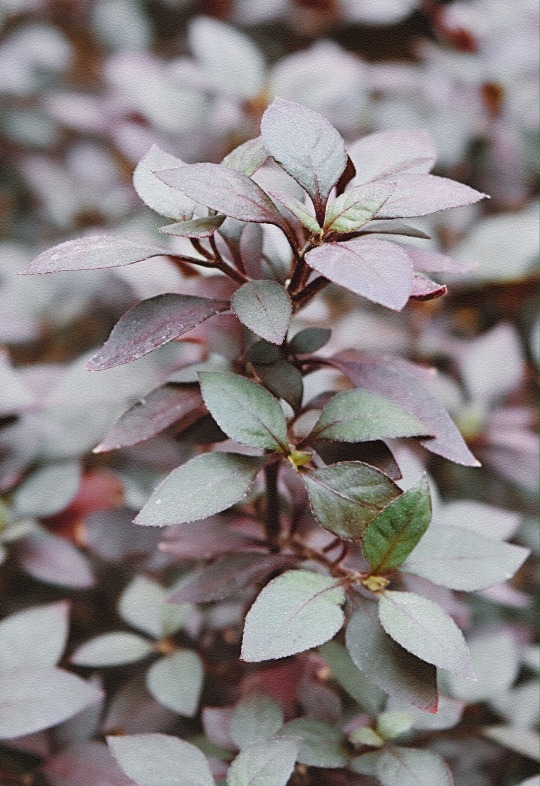
FALSE HEATHER
Also know as “Mexican heather” or “Elfin Herb”, this type of Heather does not relate to the Scotch common one you probably know. Its name comes precisely from that, imitating the Heather. By itself, the False Heather has amazing antioxidant healing properties, it has been used to treat high cholesterol, or colds and chills by tea infusions. Many believe it has antitumor and anti cancerous spread properties. It also brings good luck, admiration and solitude. You can use it in potions, talismans or amulets to attract not only those properties but also health.

Those where some of the most interesting and beautiful plants my parents have in their garden. Do you have one of these as well? Have you used them before in your craft?
I really hope you liked this blog
Image source: my camera 📸
Blessed be,
-May xo.
Bibliography
- Gruca, M., van Andel, T. R., & Balslev, H. (2014, July 23). Ritual uses of palms in traditional medicine in sub-Saharan Africa: a review. Retrieved April 13, 2020, from https://www.ncbi.nlm.nih.gov/pmc/articles/PMC4222890/
- John, L. S., & Tilley, D. (2002, September). Firecracker Penstemon . Retrieved April 13, 2020, from https://www.nrcs.usda.gov/Internet/FSE_PLANTMATERIALS/publications/idpmcpg10756.pdf
- Croton Plant Care: An Ultimate Guide: Ambius US. (n.d.). Retrieved April 13, 2020, from https://www.ambius.com/indoor-plants/ultimate-guide-croton-plant-care/#what-are-the-benefits-of-croton-plants
- 7 Powerful Vervain Magical Properties [For Love and Protection]. (n.d.). Retrieved April 13, 2020, from https://www.google.com.mx/amp/s/magickalspot.com/vervain-magical-properties/amp/
- Spiritual significance of flowers = Golden Dewdrops. (n.d.). Retrieved from https://www.aurobindo.ru/images/flowers/316_e.htm
- Flower: African Violet. (n.d.). Retrieved April 13, 2020, from https://www.google.com.mx/amp/s/threehundredandsixtysix.wordpress.com/2013/02/14/flower-african-violet/amp/
- Antinociceptive Activity Of Methanolic Extract Of Leaves Of Alternanthera Brasiliana Kuntz. (2009). Retrieved from https://pharmacologyonline.silae.it/files/archives/2009/vol3/005.
- Anticancer Research. (n.d.). Retrieved April 13, 2020, from http://www.stuartxchange.org/Kupea
- App: PictureThis
13 notes
·
View notes
Text
how not to get eaten
so im taking this really cool class on writing the undead and one of my assignments was a zombie apocalypse survival plan and literally no one asked for this but im posting it anyways!!!
i wrote it from the pov of someone bitten and dying and lowkey....well done brooke anyways enjoy!!
This plan may be coming too late to do anyone any good. Had I known this was coming, had any of us known, we’d have prepared. We’d have found bunkers and ammo and high walls.
But we didn’t. And now, it is too late for us. All I can hope is that it isn’t too late for you.
What we know:
The virus spreads through bite or scratch. There have been zero known survivors of the infection. Once infected, the virus takes 24 hours to cook before the kitchen burns down.
Following that logic, I have approximately 22 hours before it takes me.
Recommendation: don’t get bit.
What we know:
The only way to kill a zombie is with a beheading or a headshot. Beheading has proven to be much more satisfying, but close combat increases risk of infection.
Example 1: the bite on my arm.
Recommendation: keep your distance.
What we know:
The undead have very few weaknesses, but they don’t do well in the cold. Their rotting joints and crumbling bones freeze before their broken minds even realize it.
Recommendation: skip the sunny beaches.
I haven’t anything to do but sit here and die. But if I could, if I could go back and turn it around, make different choices, follow a different road, I would have.
Though every road these days seems to end in the same place. Maybe the goal is to take as long as possible to get there.
The beginning:
Big cities breed fear just as fast as they do the virus. Find a car, preferably a big one, but in the beginning, escape is more important than the specifics of it. Get out of populated cities, and don’t stop until you’re gone.
Destination:
I hear the Dakotas are particularly frosty. Minnesota, Montana, Wyoming, too. Make long winters and low populations your home.
When I hit the streets, fleeing a dead Los Angeles, I had nothing but a school backpack stuffed with textbooks and pencils. But I wanted more. If I’d had it, maybe I wouldn’t be here.
But this isn’t about me anymore. It’s about you. You, unbit, undamned, completely alive, you. So, listen. Listen carefully.
Supplies:
Don’t get married to a store. Stop at as many as you need, collecting as much as you can along the way. It’s the end of the world, after all. You’ve got time, if you’re careful. Carry gas containers and fill them up.
Food:
Anything you can get your hands on. Preferably cans, non-perishables, tiny, stackable things that don’t heavily weigh down your bags. Eat as much as you can, whenever you can.
Recommendation: Swimsuit season isn’t coming. If you find a candy bar, eat it. If you find a dented can of that vegetable you’ve always hated, eat it.
Water:
Stock up on jugs and bottles (i.e. steal from stores). When those run out, and they will, chlorine tablets and iodine drops will become your best friend. Never drink water you haven’t boiled or purified.
Cholera and Typhoid were a thing of the past when the world was on its feet. It isn’t anymore. Don’t let water, of all things, be the one that kills you.
Recommendation: You can make it no more than 3 days without water and 3 weeks without food
The thing no one tells you about the infection: it takes your mind before your body. I can feel it, pulling at the seams in my head, unraveling the memories I’ve made. Not that there are many good ones, of course. But I feel them slipping away.
Medicine:
Pharmacies are your best friend. Behind the counter is a plethora of drugs, all of which could, and probably will, save your ass.
⎫ Penicillin: anti-biotic
⎫ Morphine: a painkiller, for which I’d murder right now
⎫ Oxycodone: another narcotic for pain (because can you ever have enough?)
⎫ Benzodiazepines: shockingly, the end of the world is an incredibly stressful event.
⎫ Epinephrine Injector (epi-pens): the people of the world are trying to kill you. Don’t let a bee sting or peanut butter cup send you to the grave.
⎫ Aspirin/Tylenol: for when the oxycodone and morphine run out
⎫ Birth control: the chances of surviving childbirth and pregnancy in this world are slim. The chances of a child born in the apocalypse making it to their 1st birthday are even slimmer.
Weapons:
⎫ baseball bat (think Z Whacker from Z Nation)
⎫ Shotgun
⎫ AR 15
⎫ Crossbow
⎫ Colt 45
⎫ Grenades
⎫ Land mines
⎫ Bazooka (a stretch, but I really wish I’d found one)
Recommendation: there are military bases across the country with heavy arsenals. Find them. Plus, they’re fenced. You might even get a night’s rest with your shotgun. You might even find a tank.
Recommendation: if you can find a tank, steal it.
Equipment checklist (i.e. all the other things you’re going to need/you’re going to want)
⎫ Clothing for the cold: wool socks, scarves, hats, thick boots, mittens, and gloves
⎫ Matches/lighters
⎫ First aid kit
⎫ Maps (county, city, state, country, whatever suits your fancy)
⎫ Flashlights
⎫ Hunting knife
⎫ Camping hammock (tied above zombie height, obviously)
⎫ Solar powered radio/walkie talkies
⎫ Batteries
⎫ Hand sanitizer, toilet paper
⎫ Tampons, pads, plan B, birth control (pills and condoms)
You’ll thank me later for that last one. I won’t be here to hear it, but I’ll appreciate it. But really. No babies. Not yet.
Recommendation: no glove no love.
Things we didn’t know, before: (though I may not be the most credible, considering the circumstances)
⎫ Safety in numbers is true, but so is the fact that we’re all animals. It should be safety in co-dependency. Only stay with those you can’t live without, those who can’t live without you. More painful when they go, surely, but less likely to end in betrayal.
⎫ Dogs can smell the dead before us. Find one. Tame it (meat is a great unifier). Teach it to warn you. Better, teach it to help you kill.
⎫ Don’t unpack. Ever. Nowhere is safe. Ever.
I’m running out of time, which is fitting, because I’m running out of things to say. It’s probably good. It’s kinda hard not to be pessimistic when you’re dying.
So, dear diary, or reader, or worms that come to decompose this paper that is never found, my last thing to say is this:
Recommendation: don’t take it for granted.
47 notes
·
View notes
Text
Throughout history, there have been individuals who seemed to possess an uncanny streak of luck, encountering circumstances or opportunities that propelled them to great heights. These fortunate few managed to harness their good fortune and transform it into remarkable achievements and contributions that shaped the course of history.
From accidental discoveries to unexpected windfalls, their stories captivate our imagination and inspire us to believe in the power of serendipity. In this exploration, we delve into the lives of some of the most lucky men in history, examining the remarkable journeys that led them to success and acclaim. Join us as we unravel the threads of fate that wove their stories, showcasing the interplay between luck and human endeavor that can lead to extraordinary outcomes.
Alexander Fleming
Alexander Fleming (1881-1955) was a Scottish biologist, pharmacologist, and Nobel laureate who made one of the most significant medical discoveries in history. Born on August 6, 1881, in Lochfield, Scotland, Fleming's work revolutionized the field of medicine and saved countless lives.
Fleming's most notable achievement was the discovery of penicillin, the world's first antibiotic. In 1928, while working at St. Mary's Hospital in London, Fleming accidentally stumbled upon this groundbreaking finding. He had been studying staphylococci bacteria when he noticed that a petri dish containing the bacteria had been contaminated with a mold called Penicillium notatum. To his surprise, he observed that the bacteria surrounding the mold had been killed off. This observation led him to realize that the mold was producing a substance with powerful antibacterial properties.
Fleming named this substance "penicillin" and began to investigate its potential uses. He conducted further experiments to isolate and purify penicillin, demonstrating its ability to kill various disease-causing bacteria. However, Fleming faced challenges in producing the antibiotic on a large scale and initially struggled to garner widespread interest and support for his discovery.
It wasn't until the 1940s, during World War II, that penicillin's potential was fully recognized. With the rise of infections among wounded soldiers, the need for an effective antibiotic became paramount. Scientists Howard Florey and Ernst Chain, along with others, built upon Fleming's work and successfully developed methods to mass-produce penicillin. Their efforts resulted in the widespread availability of this life-saving drug, which proved instrumental in treating bacterial infections and reducing mortality rates.
In recognition of his extraordinary contribution, Alexander Fleming, along with Florey and Chain, was awarded the Nobel Prize in Physiology or Medicine in 1945. His discovery of penicillin marked a turning point in medicine, leading to the development of numerous other antibiotics and revolutionizing the treatment of bacterial infections.
Beyond penicillin, Fleming made significant contributions to various fields of microbiology and immunology throughout his career. He also investigated the properties of lysozyme, an enzyme that destroys bacteria, and researched the prevention and treatment of diseases such as pneumonia and meningitis.
Alexander Fleming's accidental discovery of penicillin and his subsequent dedication to advancing its potential transformed modern medicine and saved countless lives. His work serves as a testament to the power of scientific curiosity and the profound impact one individual can have on the course of human history.
Louis Zamperini
Louis Zamperini (1917-2014) was an American Olympic athlete, World War II veteran, and inspirational figure known for his incredible story of survival, resilience, and redemption. Born on January 26, 1917, in Olean, New York, Zamperini's life was marked by extraordinary challenges and remarkable triumphs.
Zamperini's athletic journey began in his teenage years when he discovered a passion for running.
He excelled as a track and field athlete, setting records and earning a spot on the U.S. Olympic team. In the 1936 Berlin Olympics, Zamperini competed in the 5,000-meter race and caught the attention of Adolf Hitler himself, who requested a personal meeting with him. Although he didn't win a medal, Zamperini's impressive performance foreshadowed the resilience he would demonstrate in the face of adversity.
However, the outbreak of World War II interrupted Zamperini's athletic career. He joined the U.S. Army Air Forces and became a bombardier in the Pacific theater. In 1943, his plane crashed into the Pacific Ocean during a rescue mission, leaving Zamperini and two other crew members stranded at sea for 47 harrowing days.
Enduring starvation, shark attacks, and treacherous weather conditions, Zamperini and his companions faced unimaginable hardships. They managed to survive by catching rainwater and catching fish, clinging to hope despite the desperate circumstances. Eventually, Zamperini and one of his crewmates were rescued by a Japanese patrol boat and taken as prisoners of war.
For the next two years, Zamperini endured severe mistreatment, brutality, and torture at the hands of his captors in various Japanese prison camps. He faced relentless physical and psychological abuse, yet managed to maintain his spirit and resilience, refusing to break under the pressure.
Zamperini's story took an unexpected turn when World War II came to an end. He was liberated in 1945 and returned to the United States as a hero. However, the traumas he endured during the war took a toll on his mental and emotional well-being, leading him down a path of anger, alcoholism, and despair.
It was during this dark period that Zamperini found redemption through his Christian faith. Attending a religious revival meeting led by Billy Graham, he experienced a profound spiritual awakening that transformed his life. Zamperini forgave his former captors and dedicated himself to spreading a message of forgiveness, hope, and resilience.
Zamperini's remarkable story gained widespread recognition when it was chronicled in Laura Hillenbrand's bestselling book "Unbroken: A World War II Story of Survival, Resilience, and Redemption" and its subsequent film adaptation directed by Angelina Jolie.
Throughout his life, Zamperini became an inspirational speaker, sharing his experiences and the lessons he learned about the power of forgiveness, perseverance, and the indomitable human spirit. He continued to inspire others through his charitable work and involvement in various organizations.
Louis Zamperini's life exemplifies the strength of the human spirit in the face of unimaginable adversity. His story serves as a reminder of the resilience and courage that can be found within us, even in the darkest of times. Zamperini's legacy continues to inspire and uplift people around the world, leaving an enduring impact on the hearts and minds of those who hear his incredible tale of survival and redemption.
Christopher Columbus
Christopher Columbus (1451-1506) was an Italian explorer and navigator who is widely credited with leading the first European expedition to discover the Americas. Columbus's voyages across the Atlantic Ocean had a profound impact on world history, shaping the Age of Exploration and leading to significant historical consequences.
Born in Genoa, Italy, in 1451, Columbus developed a passion for exploration and navigation from a young age. He embarked on numerous maritime journeys, gaining valuable experience and knowledge of navigation techniques and trade routes. Inspired by his studies and the prevailing belief in the possibility of reaching Asia by sailing west, Columbus sought support for his ambitious plan to find a western route to the lucrative spice trade.
After facing rejection from several European rulers, Columbus finally gained the sponsorship of King Ferdinand II and Queen Isabella I of Spain in 1492. On August
3 of that year, he set sail with three ships—the Santa Maria, the Pinta, and the Niña—embarking on what would become his most famous voyage.
On October 12, 1492, after weeks of sailing across the Atlantic, Columbus and his crew sighted land in the present-day Bahamas, believing they had reached the Indies (Asia). This encounter marked the beginning of European exploration and colonization in the Americas. Columbus subsequently made additional voyages to the Caribbean, exploring various islands, including Cuba and Hispaniola (now Haiti and the Dominican Republic).
Columbus's voyages, often referred to as the "Columbian Exchange," had far-reaching consequences. They initiated widespread contact between Europe and the Americas, leading to the exchange of plants, animals, diseases, and cultures. This contact significantly impacted the world's ecosystems, economies, and demographics. However, it's crucial to acknowledge that Columbus's arrival also had devastating effects on the indigenous populations of the Americas, including forced labor, enslavement, and the introduction of diseases to which they had no immunity.
Despite his historical significance, Columbus did not fully comprehend the true nature of his discoveries. He maintained the belief that he had reached the outskirts of Asia until his death. Nonetheless, his expeditions opened up new trade routes and spurred further European exploration and colonization in the New World.
The legacy of Christopher Columbus is a topic of ongoing debate and reevaluation. While he is traditionally celebrated for his role in bridging the Old World and the New World, the impact of his actions on indigenous populations and the complex consequences of colonization are also important aspects to consider.
Christopher Columbus's voyages remain significant milestones in world history, representing a turning point in global exploration and forever altering the course of human civilization. They sparked a wave of exploration, colonization, and cultural exchange that shaped the modern world and laid the foundation for the interconnectedness of nations and peoples across continents.
0 notes